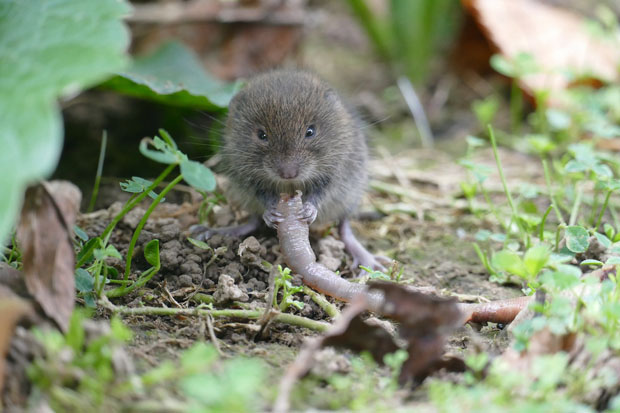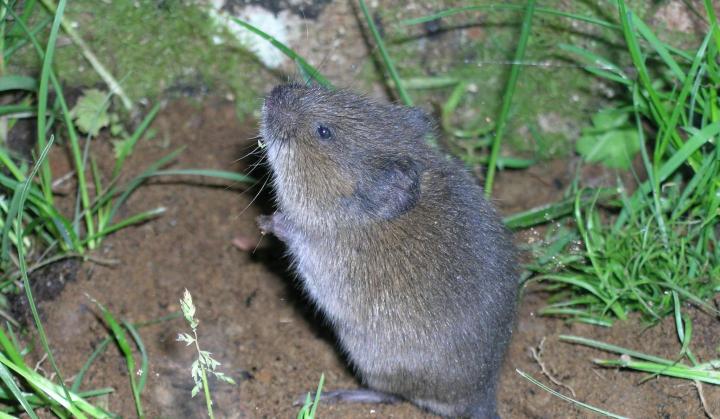Handling Vole Damage: Effective Control Strategies
Handling Vole Damage: Effective Control Strategies
Blog Article
Comprehensive Guide to Efficient Vole Bug Control: Invasion Identification and Therapy Techniques
In the world of reliable parasite control, vole infestations posture a special challenge that demands a tactical strategy. By exploring the nuances of vole actions, comprehending essential indicators of infestation, and assessing a variety of control options, one can develop a detailed technique to combat these elusive parasites.
Recognizing Vole Actions
Vole habits is defined by their delving routines and fast recreation rates, making them a difficult parasite to control effectively. These little rodents generally develop detailed passage systems underground, utilizing them for sanctuary, food storage, and transport. Voles are herbivores, taking in a range of plants, bulbs, origins, and grasses, which can cause significant damage to yards, orchards, and grass. Their fast reproductive price further makes complex control initiatives, with ladies with the ability of producing several litters in a solitary year, each consisting of a number of offspring.
Voles are most active during the morning and evening hours, investing the bulk of their time foraging for food. Their tunneling routines not just disrupt grass and gardens yet also make them testing to find and remove. Understanding vole behavior is critical for reliable pest control approaches. By determining their burrow locations, checking feeding locations, and executing targeted control methods, such as trapping or habitat modification, vole invasions can be managed effectively.
Indications of Vole Invasion

Avoidance Techniques
Implementing effective prevention approaches is vital in lessening vole invasions and securing greenery from their destructive feeding practices. To stop vole problems, it is vital to start by eliminating potential food sources and sanctuary.
Consistently inspecting the property for indicators of vole task, such as paths and burrow openings, is important for early detection and timely activity. If vole task is believed, think about making use of repellents or catches strategically placed near their paths. Employing natural predators like snakes or owls can likewise aid maintain vole populations in check. By carrying out a combination of these avoidance gardeners, strategies and home owners can effectively shield their plants from vole damage.
Non-Lethal Control Techniques
To effectively manage vole populations while focusing on humane techniques, non-lethal control techniques provide practical services for minimizing vole damage in gardens and landscapes. One effective technique is the use of physical obstacles such as equipment fabric or cable mesh to safeguard vulnerable plants. These barriers can be hidden a minimum of 12 inches bent and deep at a 90-degree angle to stop voles from burrowing beneath. Furthermore, visit this web-site habitat alteration can prevent voles by minimizing their chosen food sources and hiding areas. Keeping a well-mowed yard, eliminating particles, and maintaining plants cut can make the environment less attractive to voles.

Lethal Control Options
One effective method for addressing vole problems in gardens and landscapes includes the strategic usage of lethal control choices. When faced with a severe vole invasion that non-lethal approaches have failed to contain, applying dangerous control procedures becomes critical. One generally employed deadly control choice is the usage of breeze catches. These traps are developed to quickly and humanely kill like it voles upon activation, making them a preferred selection for several gardeners and landscapers. To boost the effectiveness of breeze traps, it is recommended to place them in areas where vole activity is high, such as along runways or near burrow entries. Another deadly control choice is the usage of harmful lures particularly formulated to target voles. These lures include poison that is consumed by the voles, leading to their ultimate death. Care needs to be worked out when utilizing hazardous baits to protect against damage to non-target animals or pet dogs. Generally, when utilizing dangerous control choices, it is necessary to do so responsibly and based on neighborhood laws to effectively take care of vole invasions.
Conclusion
To conclude, efficient vole pest control requires an extensive understanding of vole behavior, identification of indications of problem, application of avoidance strategies, and usage of both deadly and non-lethal control approaches. By combining these strategies, people can properly manage vole populations and secure their residential property from damages. It is essential to resolve vole infestations quickly to avoid more concerns and decrease the influence on the surrounding setting.
Given the elaborate passage systems and rapid recreation prices particular of voles, recognizing the indications of vole problem ends up being vital in effective parasite control. One of the main indicators of vole existence is the visibility of surface paths or tracks in lawn or snow, generally concerning 1-2 look at this website inches wide, produced as voles travel in between their burrows and food resources.To properly handle vole populaces while prioritizing gentle techniques, non-lethal control strategies use functional solutions for decreasing vole damage in landscapes and gardens.One efficient technique for attending to vole invasions in gardens and landscapes involves the tactical use of dangerous control options. vole control.In verdict, efficient vole bug control requires a comprehensive understanding of vole actions, recognition of signs of problem, application of prevention strategies, and use of both non-lethal and lethal control approaches
Report this page